(1248 products available)









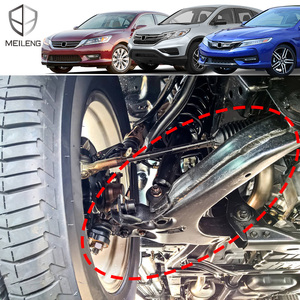
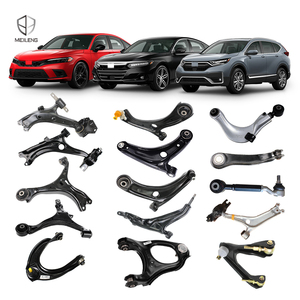
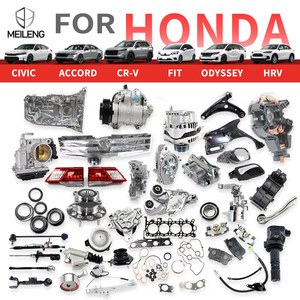
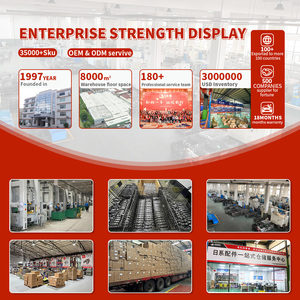






















 Ready to Ship
Ready to Ship








 Ready to Ship
Ready to Ship






































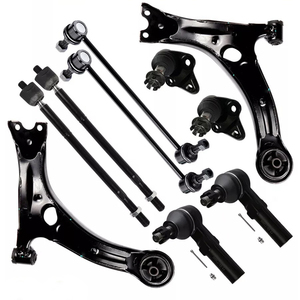

























































 Ready to Ship
Ready to Ship










































































Many Honda Civic cars have upper control arms, which are also called control arm assemblies. They connect the Civic's suspension system to the vehicle frame. The control arms help with the steering and stability of the car. If the control arms are worn out or damaged, users may experience problems like a shaky steering wheel or unstable handling. There are several types of Civic upper control arms that users should be aware of:
Forged Upper Control Arm
The forged upper control arm is made from strong steel. This steel is heated and molded into shape. The process improves the strength and durability of the control arm. Vehicles with heavy loads or tough driving conditions can use forged control arms.
FWD Upper Control Arm
The front-wheel-drive (FWD) upper control arm is common in many Honda Civic models. The control arms provide good handling and steering precision. The FWD upper control arms improve the control of the vehicle. Drivers can easily make turns or change speeds.
Rear Upper Control Arm
The rear upper control arm connects the rear suspension to the vehicle frame. It controls the movement of the rear wheels. This control arm is important for Civic models that have rear-wheel drive (RWD). The RWD upper control arm improves the stability of the vehicle when accelerating.
Adjustable Upper Control Arm
The adjustable upper control arm allows users to change the angle of the wheels. This control arm is useful for Honda Civic models that have been modified or tuned. Sports teams or racing enthusiasts may use the adjustable control arm to improve the handling of the vehicle.
Conventional Upper Control Arm
The conventional upper control arm is a simple yet effective design. It has a triangular or A-shaped design with one or two ball joints. The conventional upper control arms are affordable and easy to maintain. Many Honda Civic models use conventional upper control arms.
When sourcing Honda Civic upper control arm assemblies, it’s important to understand the specifications and maintenance practices to ensure the right fit and longevity of the product.
Here are the key specifications to consider:
Material
The upper control arms are made from different materials. However, it is standard to find steel and aluminum control arms. The steel arms are long-lasting and can withstand heavy loads. They are ideal for trucks and other commercial vehicles. On the other hand, aluminum control arms, such as the honda civic upper control arm, are lighter. They also resist corrosion and are suitable for high-end vehicles.
Ball joint
The ball joint connects the upper control arm to the steering knuckle. It allows the wheels to turn and pivot. The ball joint is sealed or greaseable. Sealed ball joints are maintenance-free. They are standard in most upper control arms. On the other hand, greaseable ball joints allow the user to add grease through a fitting. The ball joint is usually heavy-duty to handle the weight and stress of the vehicle.
Bushing
The bushing is a small rubber component that connects the upper control arm to the vehicle’s frame. It absorbs shocks and vibrations. Most upper control arms have rubber bushings. However, some models have polyurethane bushings. Polyurethane is more durable than rubber.
Finish
The upper control arm has different finishes. The most common are powder-coated and painted finishes. The finishing protects the control arm from rust and corrosion.
Fitment
The upper control arms are designed for different vehicle makes and models. Additionally, they are customized for different suspension systems. Therefore, it is important to select the right upper control arm to ensure compatibility.
Proper maintenance of the control arm is key to ensuring safety and longevity. Here are some maintenance tips:
Regular inspection
Inspect the upper control arm for wear and damage. Look for cracks, rust, and worn bushings. Also, check the ball joints for any signs of wear. A visual inspection helps to identify potential problems before they get worse.
Check the alignment
Ensure that the wheels are aligned. An aligned wheel ensures even tire wear. Additionally, it prevents stress on the upper control arm.
Replace worn parts
Change the bushings, ball joints, and other components of the upper control arm that are worn out. It is best to use original spare parts to replace the components of the upper control arm.
Keep it clean
Clean the upper control arm regularly. This prevents the buildup of dirt and grime. A clean control arm functions optimally and lasts longer.
Choosing the right Honda Civic upper control arm for a target market requires careful consideration of several factors. Here are some key points to keep in mind when selecting upper control arms for resale:
Model Compatibility
Selecting control arms that fit various Honda Civic models is essential, as it broadens the potential market. Focus on popular Civic models and production years to ensure better fitment and demand for the upper control arms.
Quality and Reliability
Prioritize upper control arms from reputable suppliers that are known for their quality and reliability. Even though the control arms are not original spare parts, they should have consistent performance and durability. This way, buyers can get value for their money.
Market Trends
Research current market trends to determine the most sought-after upper control arm types. For instance, there might be an increase in demand for adjustable upper control arms among Honda Civic users who engage in motorsport or off-road applications.
Condition and Warranty
Decide whether to sell new, used, or refurbished upper control arms. Each option has its advantages and challenges. For example, new control arms can be more expensive, but they come with a warranty. Used control arms might come with a shorter lifespan and no warranty.
Performance vs. Daily Driving
Consider the target market's preferences. If the focus is on performance enthusiasts, prioritize upper control arms that enhance vehicle stability and handling. For a typical daily driving market, stock-like control arms that provide decent suspension geometry and durability are ideal.
Pricing Strategy
Develop a competitive pricing strategy based on the product's quality, condition, and target market. Consider the potential customers' purchasing power and prioritize products that give them value for their money.
Supplier Reputation
Work with reputable civic upper control arm suppliers who offer reliable products and services. Read reviews and testimonials from other customers to determine the supplier's product quality and service reliability.
Replacing a control arm can be a manageable task for those with basic mechanical skills and the right tools. Here's a step-by-step guide on how to replace a control arm:
Q1: What are the signs of a damaged control arm?
A1: Users might notice a clunking sound when driving, especially over bumps. The car may drift to one side, indicating alignment issues. Visually, the control arm might show cracks or rust. The tire wear pattern could be uneven, particularly on one side.
Q2: Can other Honda models use the control arm meant for the Civic?
A2: No, the control arm is designed specifically for the Civic. However, other variants of the Civic (depending on the year) may use the same control arm. It's essential to verify compatibility based on the car's make, model, and year.
Q3: Should both upper control arms be replaced simultaneously?
A3: It's generally recommended to replace both arms to maintain balanced handling and stability. Replacing just one can lead to uneven wear and potentially affect the car's alignment and handling characteristics.
Q4: Is it necessary to get a professional mechanic to replace the control arm?
A4: While DIY replacement is possible, it's crucial to ensure the job is done accurately. An improperly installed control arm can compromise safety. A professional mechanic also has the tools to align the wheels correctly after the installation.
Q5: How often should the control arm be inspected?
A5: Regular visual inspections are advisable, especially after driving on rough roads. It's also good to check the control arm during routine maintenance or when changing tires.